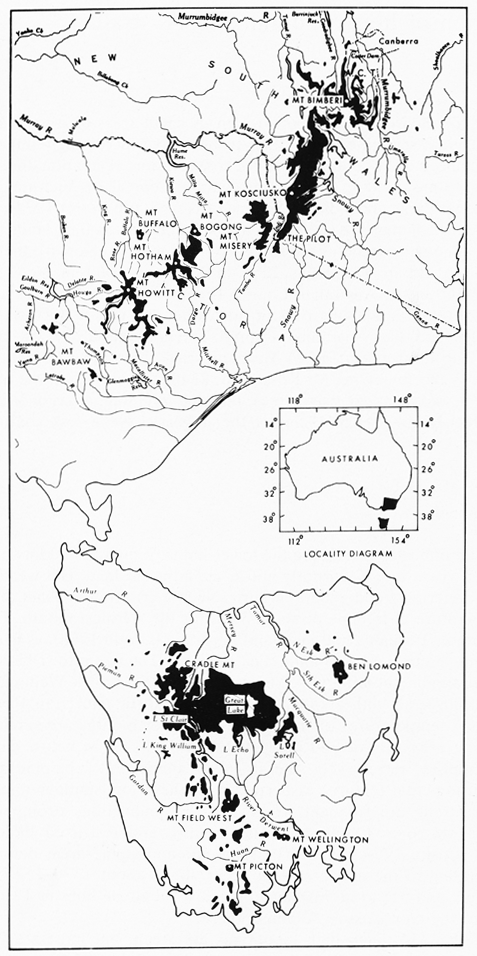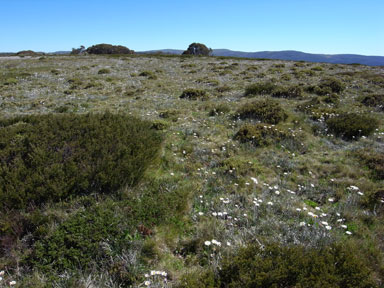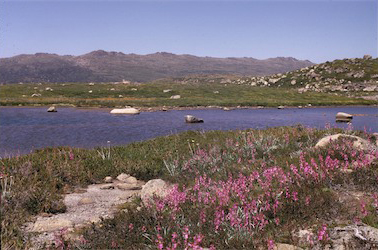 Alpine shrubland with cushion plant, Abrotanella forsteroides, Tas |
|
Alpine shrubland and herbfields
In Australia montane herbfields and shrublands are restricted to the montane regions of south-eastern Australia above 1300 metres. This region occupies less than three per cent of the Australian landmass and straddles the borders of the Australian Capital Territory, Victoria and New South Wales on the Australian mainland, as well as a significant element in Tasmania.
Extensive areas above the tree-line are occupied by a very characteristic form of what would elsewhere be described as heathland. The components of these can be divided broadly into three groups: one showing strong affinities with existing temperate rainforest taxa, particularly members of the Podocarpaceae, and Nothofagus in Tasmania; a second group of typically Australian sclerophylls, such as members of the Ericaceae, Proteaceae and Myrtaceae; and a third group with predominantly herbaceous taxon relationships such as the woody dasy bushes, Asteraceae and pea flowers such as Oxylobium..
Above about 1830 m on the mainland and 915 m in Tasmania there are also Alpine Herbfields. Herbaceous vegetation of sod-tussock grassland of Poa - Danthonia replace shrublands along broad alpine valleys and in basins of cold-air drainage. Wet areas, both in the alpine and sub-alpine belts have Sphagnum bogs, Carex fens, and cushion heaths (in Tasmania) usually with marginal wet heaths of mainly Epacris species. On sites with prolonged snow cover there are Short Alpine Herbfields (Plantago-Neopaxia spp.) and feldmarks of Coprosma-Colobanthus on the upper part of the snowpatch and Epacris-Chionohebe on sites exposed to strong winds.
![]() Alpine vegetation photos from the Australian Plant Image Index
Alpine vegetation photos from the Australian Plant Image Index
Alpine regions of Australia

Sources: Australia's Native Vegetation - from rainforest to spinifex, map and information poster produced by the National Land & Water Audit, Natural Heritage Trust, Australian Government, 2001
https://www.environment.gov.au/land/nrs/science/ibra/australias-ecoregions
Barlow, Bryan (ed) (1986) 'Flora and Fauna of Alpine Australasia, Ages and Origins', CSIRO/ASBS, Melbourne
Keast, Allen (ed) (1981) ' Ecological Biodiversity of Australia', W.Junk Publishers, Hague, Netherlands.
Map. Costin, A.B. (1981) 'Vegetation of High Mountains in Australia', in Keast, Allen (ed) (1981) ' Ecological Biodiversity of Australia', W.Junk Publishers, Hague, Netherlands.
![An Australian Government Initiative [logo]](/images/austgovt_brown_90px.gif)



